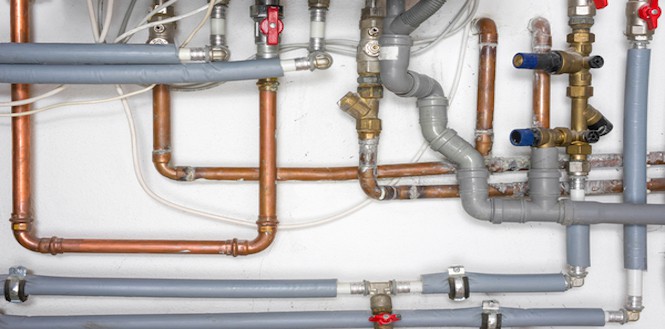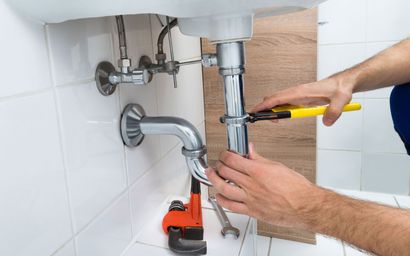Just how do you actually feel with regards to Anatomy of a House: Understanding the Components?

Recognizing how your home's pipes system works is necessary for every single homeowner. From supplying clean water for alcohol consumption, food preparation, and bathing to safely removing wastewater, a well-kept plumbing system is critical for your family's wellness and convenience. In this comprehensive overview, we'll discover the elaborate network that comprises your home's pipes and offer tips on upkeep, upgrades, and handling common issues.
Introduction
Your home's plumbing system is more than just a network of pipelines; it's an intricate system that guarantees you have accessibility to clean water and efficient wastewater removal. Recognizing its parts and exactly how they work together can aid you protect against expensive repair services and make sure everything runs efficiently.
Fundamental Parts of a Plumbing System
Pipes and Tubing
At the heart of your pipes system are the pipelines and tubing that bring water throughout your home. These can be made from various materials such as copper, PVC, or PEX, each with its advantages in regards to toughness and cost-effectiveness.
Fixtures: Sinks, Toilets, Showers, and so on.
Components like sinks, toilets, showers, and tubs are where water is utilized in your home. Understanding how these components attach to the plumbing system helps in identifying troubles and preparing upgrades.
Valves and Shut-off Factors
Shutoffs control the flow of water in your pipes system. Shut-off shutoffs are important during emergencies or when you require to make repair services, enabling you to isolate parts of the system without interfering with water circulation to the entire house.
Supply Of Water System
Key Water Line
The primary water line links your home to the metropolitan water system or a private well. It's where water enters your home and is dispersed to different fixtures.
Water Meter and Pressure Regulatory Authority
The water meter steps your water usage, while a stress regulator ensures that water moves at a safe stress throughout your home's plumbing system, avoiding damages to pipelines and fixtures.
Cold Water vs. Warm water Lines
Recognizing the distinction between cold water lines, which supply water straight from the main, and warm water lines, which bring heated water from the water heater, aids in fixing and preparing for upgrades.
Drain System
Drain Water Lines and Traps
Drain pipes carry wastewater far from sinks, showers, and bathrooms to the drain or sewage-disposal tank. Traps protect against sewage system gases from entering your home and also catch particles that might cause obstructions.
Ventilation Pipes
Air flow pipes allow air into the drainage system, protecting against suction that can reduce drain and trigger catches to vacant. Proper air flow is essential for keeping the honesty of your plumbing system.
Importance of Correct Drainage
Ensuring appropriate drain avoids back-ups and water damages. Frequently cleaning drains and keeping traps can prevent costly fixings and expand the life of your plumbing system.
Water Heating Unit
Types of Hot Water Heater
Hot water heater can be tankless or conventional tank-style. Tankless heaters warm water on demand, while containers keep heated water for instant use.
Updating Your Plumbing System
Factors for Upgrading
Updating to water-efficient fixtures or changing old pipes can boost water high quality, lower water expenses, and increase the worth of your home.
Modern Plumbing Technologies and Their Advantages
Explore modern technologies like wise leak detectors, water-saving toilets, and energy-efficient water heaters that can conserve money and minimize environmental influence.
Expense Factors To Consider and ROI
Determine the in advance expenses versus long-term cost savings when considering plumbing upgrades. Several upgrades spend for themselves with reduced energy bills and less repairs.
How Water Heaters Link to the Pipes System
Understanding exactly how water heaters link to both the cold water supply and warm water distribution lines assists in detecting issues like not enough hot water or leakages.
Upkeep Tips for Water Heaters
Regularly purging your hot water heater to eliminate sediment, inspecting the temperature level setups, and examining for leaks can expand its life-span and boost energy effectiveness.
Usual Plumbing Problems
Leakages and Their Causes
Leaks can happen due to aging pipelines, loosened installations, or high water pressure. Dealing with leakages without delay protects against water damages and mold and mildew development.
Blockages and Clogs
Obstructions in drains and commodes are often caused by purging non-flushable things or a buildup of oil and hair. Using drain displays and bearing in mind what drops your drains pipes can stop obstructions.
Indicators of Pipes Problems to Expect
Low water stress, slow drains pipes, foul odors, or unusually high water costs are indicators of potential plumbing problems that should be dealt with immediately.
Plumbing Maintenance Tips
Regular Evaluations and Checks
Schedule annual plumbing evaluations to catch problems early. Try to find indicators of leakages, rust, or mineral accumulation in taps and showerheads.
DIY Maintenance Tasks
Simple tasks like cleansing tap aerators, looking for commode leakages utilizing color tablets, or insulating exposed pipes in chilly environments can stop significant pipes issues.
When to Call a Professional Plumbing
Know when a plumbing concern needs expert competence. Trying complicated repair work without appropriate understanding can result in more damage and higher repair costs.
Tips for Minimizing Water Use
Straightforward practices like taking care of leaks promptly, taking shorter showers, and running complete loads of washing and recipes can save water and lower your energy expenses.
Eco-Friendly Pipes Options
Consider lasting pipes products like bamboo for flooring, which is durable and eco-friendly, or recycled glass for kitchen counters.
Emergency Readiness
Steps to Take During a Pipes Emergency situation
Know where your shut-off valves are located and just how to shut off the supply of water in case of a burst pipe or significant leakage.
Significance of Having Emergency Situation Get In Touches With Handy
Maintain get in touch with information for neighborhood plumbing professionals or emergency solutions easily available for fast action during a pipes dilemma.
Environmental Influence and Conservation
Water-Saving Components and Home Appliances
Installing low-flow taps, showerheads, and toilets can considerably reduce water use without giving up performance.
Do It Yourself Emergency Fixes (When Applicable).
Temporary repairs like making use of duct tape to spot a dripping pipeline or placing a container under a trickling faucet can reduce damage until an expert plumbing arrives.
Verdict.
Comprehending the anatomy of your home's pipes system equips you to maintain it successfully, conserving time and money on repair work. By adhering to normal maintenance routines and remaining educated about modern plumbing innovations, you can ensure your plumbing system operates effectively for several years ahead.
Exploring Your Homes Plumbing Anatomy
Water Supply System
Main Water Line: This is where water enters your home from the municipal supply or a private well. Water Meter: Typically located near where the main water line enters the property, it measures the amount of water used. Shutoff Valve: It s crucial to know where this is in case of emergencies. It allows you to turn off the water supply to the entire house. Pipes and Fittings: These distribute water throughout your home. Materials can include copper, PVC, or PEX. Drain-Waste-Vent (DWV) System
Drains: Located in sinks, showers, and tubs, these carry wastewater away. Traps: U-shaped pipes under sinks that hold standing water, blocking sewer gases from entering the home. Vents: Pipes that lead from the DWV system to the outside, preventing vacuum formation and allowing gases to escape. Sewer Line: Carries all wastewater from the home to the municipal sewer system or a septic tank. Fixtures and Appliances
Sinks, Toilets, and Showers Dishwashers and Washing Machines Water Heaters Maintenance Tips
Regularly check for leaks in exposed pipes and around fixtures. Inspect the water heater annually for signs of wear. Clean drains and traps to prevent clogs and odors. Know how to shut off water to individual fixtures. When to Call a Professional
Major leaks or burst pipes Installation of new pipes or fixtures Septic tank issues Remodeling projects that involve plumbing changes Conclusion
Understanding the anatomy of your home's plumbing is key to maintaining a functional and efficient system. Regular checks and knowing when to call in the experts can save you time, money, and stress.
https://www.mavyn.com/blog/exploring-your-homes-plumbing-anatomy

I'm certainly very inquisitive about Exploring Your Homes Plumbing Anatomy and I hope you liked the blog post. Are you aware of another person who is serious about the topic? Do not hesitate to share it. I enjoy reading our article about Understanding Your Home's Plumbing Anatomy.
Visit